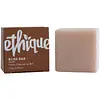What's inside
What's inside
 Key Ingredients
Key Ingredients

 Benefits
Benefits

 Concerns
Concerns

 Ingredients Side-by-side
Ingredients Side-by-side

Sodium Coco-Sulfate
CleansingWater
Skin ConditioningCitric Acid
BufferingSodium Lauroyl Glutamate
Palmitic Acid
EmollientStearic Acid
CleansingCetearyl Alcohol
EmollientSodium Sulfate
Betaine
HumectantCharcoal Powder
AbrasiveTocopherol
AntioxidantAscorbyl Palmitate
AntioxidantCoco-Glucoside
CleansingGlyceryl Oleate
EmollientHydrogenated Palm Glycerides Citrate
EmollientLecithin
EmollientSodium Hydroxide
BufferingLinalool
PerfumingLimonene
PerfumingParfum
MaskingSodium Coco-Sulfate, Water, Citric Acid, Sodium Lauroyl Glutamate, Palmitic Acid, Stearic Acid, Cetearyl Alcohol, Sodium Sulfate, Betaine, Charcoal Powder, Tocopherol, Ascorbyl Palmitate, Coco-Glucoside, Glyceryl Oleate, Hydrogenated Palm Glycerides Citrate, Lecithin, Sodium Hydroxide, Linalool, Limonene, Parfum
 Reviews
Reviews

Ingredients Explained
These ingredients are found in both products.
Ingredients higher up in an ingredient list are typically present in a larger amount.
Stearic Acid is a fatty acid. It is an emollient, emulsifier, and texture enhancer.
As an emollient, stearic acid helps soften skin. It aids the skin's protective barrier by preventing water loss. It also provides a gentle cleansing effect without stripping away natural oils.
Stearic acid may also be used to enhance the texture of products. It can add volume and stabilize ingredients such as water and oil. This can help water and oil ingredients from separating.
Sources of stearic acid include animal or vegetable fats/oils such as coconut or shea. It can be naturally found in butter, cocoa butter, shea butter, vegetable fats, and animal tallow.
This ingredient may not be Malassezia folliculitis, or fungal-acne safe.
Learn more about Stearic Acid